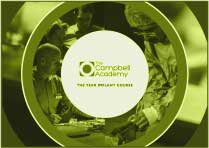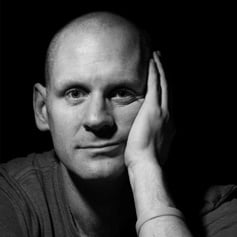
If you would rather listen to this blog, please visit our YouTube channel here.
Once a month, Nancy and Millie and I get together to provide a longer blog and this month I just wanted to talk about coupling and the behavioural feature of coupling which I first discovered in Malcolm Gladwell’s book ‘Talking to Strangers’.
That book is an extraordinary study in communication with people you’ve not yet met, and I honestly think should become a mainstay of education in healthcare for people to learn and to examine how to talk to people they don’t know.
One of the most extraordinary chapters in the book is based on coupling which examines how people are attached to locations or systems or procedures in the way that they behave.
He uses the story of Sylvia Plath, the poet, who took her own life I the 1960’s by gassing herself in an oven using town gas.
In the 1960’s many, many thousands of ladies did this (supposedly because it was clean and left little mess) and because using town gas produced from coal in a gas works was lethal.
When this means was effectively removed by the transfer to natural gas in the 1970’s the number of ladies taking their own lives dropped dramatically, they didn’t transfer to another means to gas.
This theory was once again tested with the Golden Gate Bridge in San Francisco.
For many years people had resisted the prospect of construction of a suicide net below the bridge as they thought it would ruin the aesthetic and the appearance of the bridge and the people who had a tendency to take their own lives would use a different system to commit suicide in any event.
Ultimately the suicide net was constructed, and the studies afterwards show that people did not transfer to other means of suicide, they simply stopped because they were coupled to the bridge.
I learnt this when I read the book and looked into it in further areas and I tried to use all these types of behavioural nuances to help me when I’m talking to my own patients or my team or anybody actually because I think communication is one of the most important human characteristics.
And so, with that kind of mind and that kind of eye I was watching the football at the weekend in the second week of the premier league in 2022.
One of the first things I noted was that newly promoted Nottingham Forest (nobody in our house is a fan but it was on the TV) had an incident in the game where one of the defenders kept the ball out of the goal using his arm and the referee had to review this on VAR to see whether he should be sent off and whether it was a penalty etc etc.
As he moved over to the side of the pitch to the positioned VAR screen there was a young woman (I estimate probably in her 20’s) who was screaming at the referee and making obscene and vicious hand gestures in full view of the Sky camera and live on TV.
It is perhaps true that this individual may do that in normal life, but I think it’s also true that many people behave in football stadiums in a way that they would never dream of behaving in real life.
Obviously, some of that spills over including the 2 occasions last year where I was physically threatened for being an under 14’s football coach but mostly in football people get away with things that they wouldn’t otherwise get away with because they couple to the sport or the environment or the stadium or whatever.
In the same weekend and on the Sunday Darwin Núñez wilfully headbutted his opponent (after trying to subtly headbutt him just before with the back of his head as they were vying for a challenge).
His opponent from Crystal Palace took umbrage at the subtle attempt to headbutt and pushed him in the back in which he turned round and fully headbutted the Crystal Palace defender on the pitch.
I wonder whether, if he was ever in a nightclub, Núñez (having been pushed in the back inadvertently or otherwise) would turn round and headbutt someone and interestingly I also wonder what would happen to him if he did.
If that incident had been replayed in the street in Liverpool or in a club or a pub, Núñez would be arrested but such is the way that we couple to the behaviour of football that it seems to be above the law and the woman who was gesturing and gesticulating and screaming at the referee in full view of stewards and police is able to continue as is Núñez to assault his opponent wilfully, neither receiving any sanction afterwards of any great significance.
And so, how does this relate to anything of any worth?
On the Monday, immediately following that weekend, I saw an individual for a new patient consultation in the afternoon who was a very well-spoken and sharp and intelligent individual.
She attended to see me with a distinct problem with an upper front tooth, but it was obvious that she was lacking back teeth and one of the problems with her upper front tooth was that it had fractured because it was taking too much load.
I was able to chat to her for the first 10 or 15 minutes about nothing to do with dentistry (which is always my usual format for new patients)but it was only through that process of understanding that it’s important to listen to someone speak and also that people who attend dental practices couple to different forms of behaviour, but I was able to get to the bottom of the problem.
The patient is genuinely interested in a complex and significant restoration of missing teeth and upper front tooth, but she didn’t want to give that away or tell me that because she’d been to see someone else previously some years ago who had been quite horrible and extremely sales driven and had made her think that dentists were all a specific type of character.
She was coupling to the previous experience at a dental practice by reacting defensively at the next dental practice to which she attended.
Once you understand that, you can have an open and honest conversation with the patient about it and move on to a situation where you can try to gain their trust and try to deliver a solution which is most helpful.
Coupling is everywhere when your eyes are open you can see how we associate behaviours to locations or to people or to circumstances and this has a massive impact on the way that we communicate with people on a day-to-day basis.
While coupling is one part of behavioural science, empathy and understanding the coupling of others is another.
The more layers you strip away from meeting people for the first time, the more complex and interesting and amazing it becomes.
Unravelling people as a puzzle is not a chore, it’s a privilege and the results are stunning.
Blog Post Number - 3180





Leave a comment